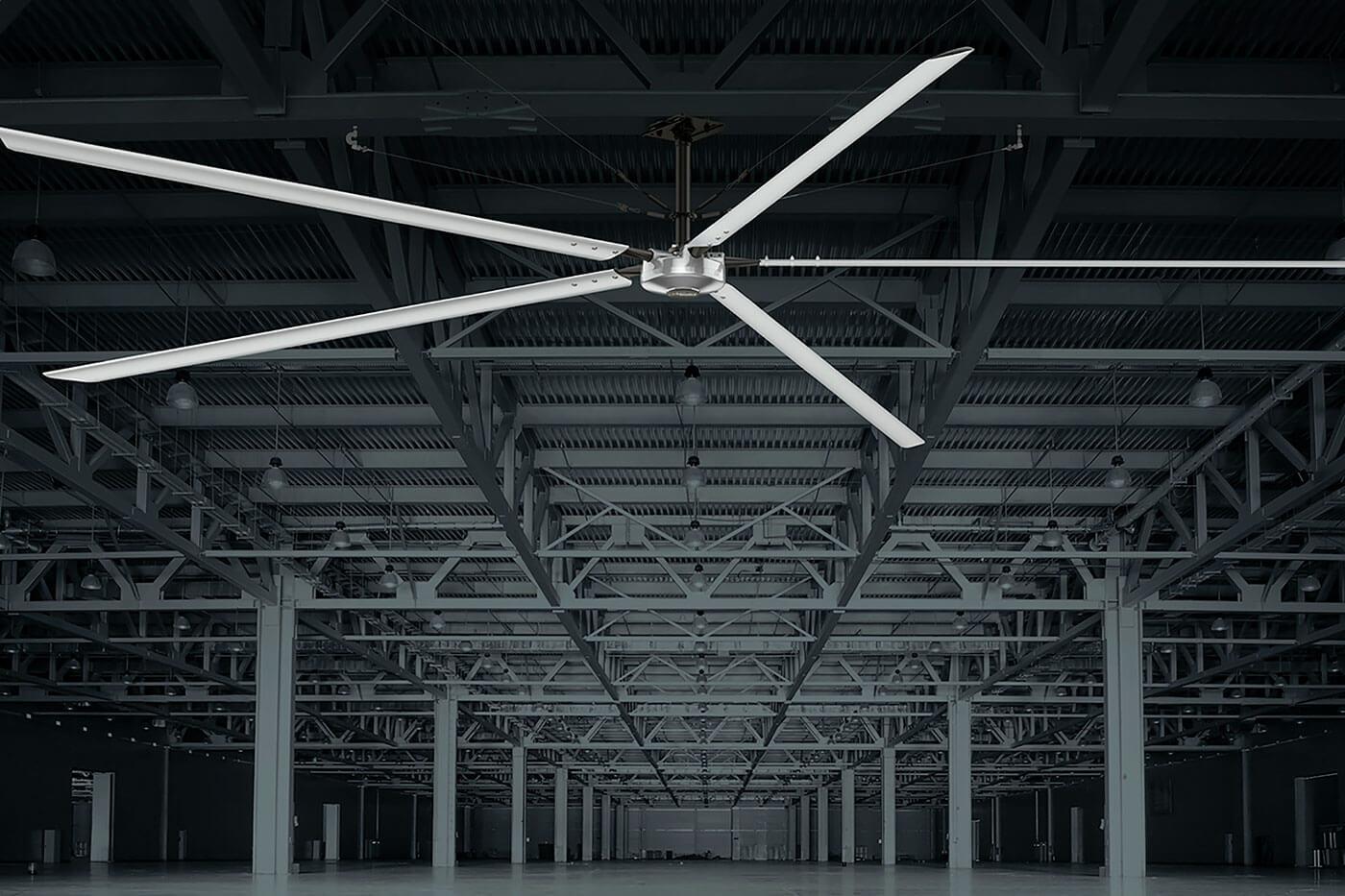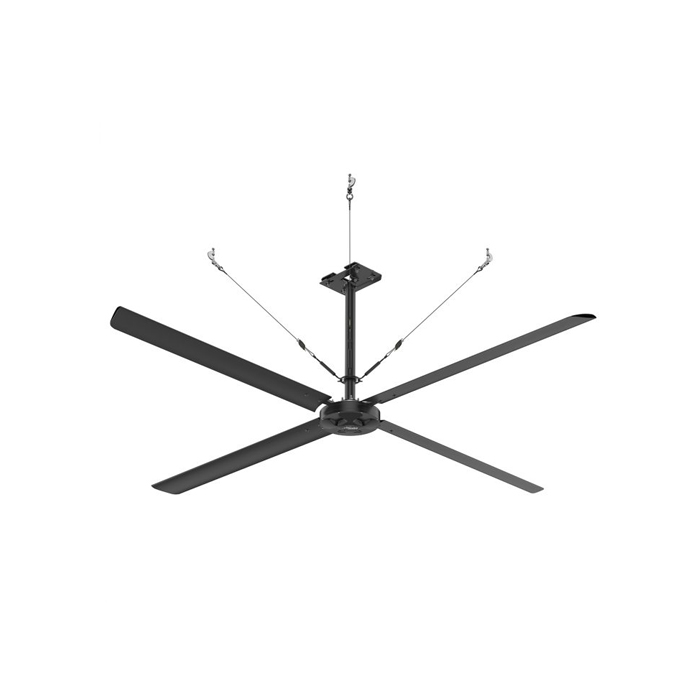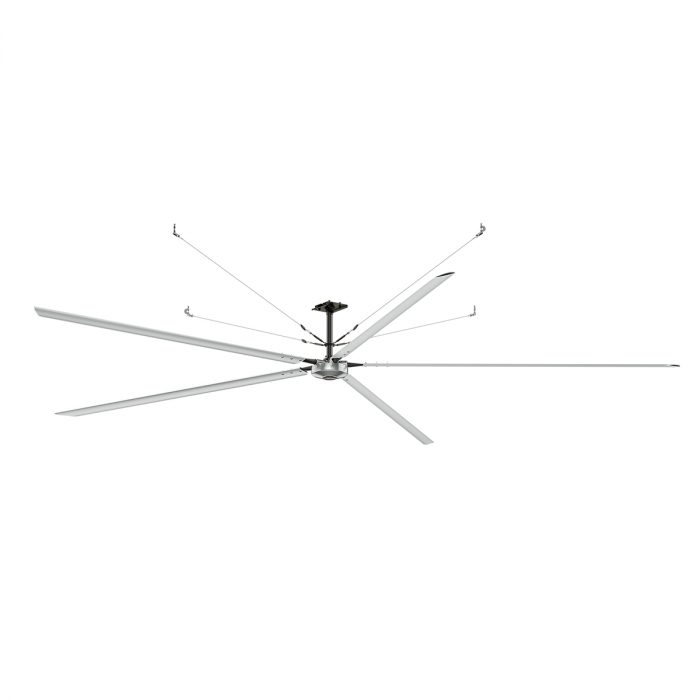
WHAT ARE HIGH VOLUME LOW SPEED (HVLS) FANS?
High Volume Low Speed (HVLS) fans move large quantities of air down towards the floor at a low speed. When the air columns hits the floor, it changes direction and moves the air outward in a 360-degree direction,
which then migrates to every nook and corner of the workplace. The wind created by the fan mimics a natural breeze-like feeling on the skin that feels like its 4-5 °C cooler, which is far more comfortable than wind produced by an ordinary HVAC system
HVLS FAN BENEFITS
We make the most efficient fans in the world, which gives you massive performance while using less power. Less power leads to lower operating cost and year-round saving for you. Save on energy usage compared to other HVLS fans and up to 12 times the air movement of conventional high-speed fans

Refresh Environment's Temperature

Avoid Heat and Fatigue Accidents in Employees

Reduce dust

Reduce Relative Humidity, Creating a Drier and cooler Environment

Provide a Consultant Airflow inside Installation Area

Distribute, Mix and Move Air throughout the are, avoiding Hot/Cold Spots

Get rid of Insects inside finished Product area or general working areas

Reduce Strong Odors
LOW ENERGY CONSUMPTION
HVLS fans can reduce winter destratification and summer cooling costs by as much as 30%. HVLS fans cost just pennies an hour to operate. The result: Your HVLS fan investment will likely pay for itself in less than a year.
Air conditioning a large building can be expensive and complex. Size, occupancy, loading docks, and large doors and windows make consistent indoor climate control difficult. An HVLS fan can help move air-conditioned air throughout the facility, keeping temperatures consistent, and in many case allowing the thermostat set point to be raised by up to 4 degrees while maintaining the same level of comfort.
An HVLS fan redirects warm air at the ceiling to the floor level, while cooler air at the floor is pulled up – reducing unnecessary heating and cutting energy use by up to 30%.


